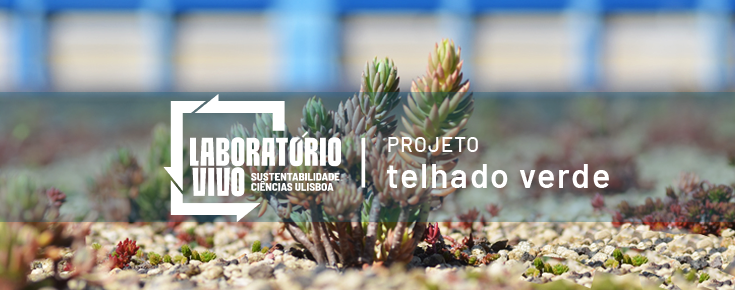

CIÊNCIAS was a pioneer in 2013, with the installation of the first green-roof in a Higher Education Institution. With the support of Galp, Neoturf Espaços Verdes and ZinCo, it started a pilot project, installing a green-roof using species adapted to the local climate, whose evolution is being monitored by researchers and students, contributing to a better understanding of the functioning and sustainability of these structures in Mediterranean areas.
What is a green-roof?
A green-roof is an area built to support plants, located on top of buildings, preferably with minimum maintenance requirements through the use of species adapted to the local climate.
What are the benefits from green-roofs?
- Structural protection of buildings
- Internal thermal isolation of buildings, and external reduction of the heat-island effect (surface temperature)
- Internal sound isolation of buildings
- Storm Water management and water retention
- Carbon sequestration
- Enhancing biodiversity
- Leisure areas
The structure of the green-roof in Ciências?
For the installation of the green-roof it was necessary to assemble a base structure with substrate and drainage, suitable for the selected vegetation, maintaining the integrity of the building. In the following figure it is possible to see the different layers of the structure supporting the green-roof.
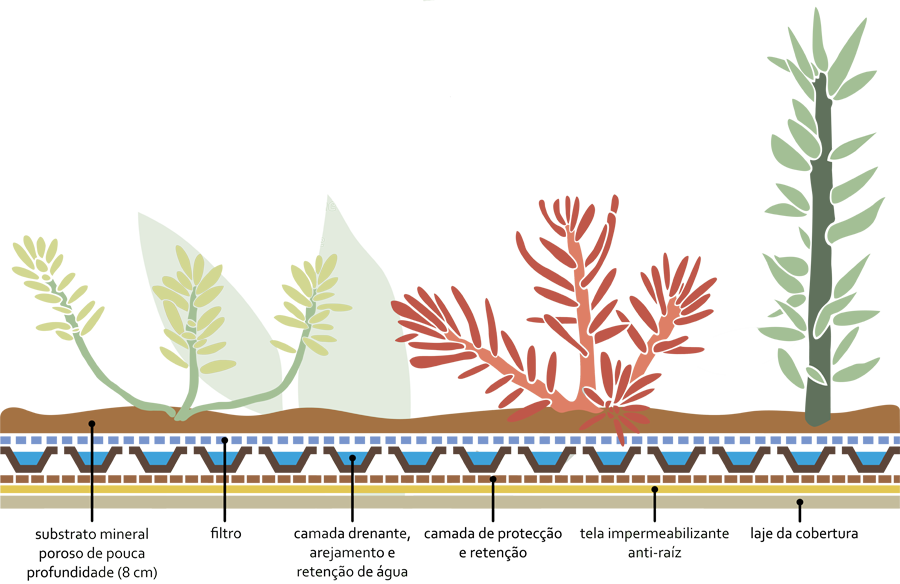
The green-roof in numbers
Installation date: 2013
Total area: 105m2
Plants installed: 1560
Number of species: 4 species of genus Sedum (Sedum/Petrosedum)
The green-roof is located in the 3rd floor area between the buildings C4 and C5, and can be observed from the 3rd floor upwards of C1, C2 and C4 buildings.
What species were used?
Four species of the genus Sedum (stonecrops) were used. These are succulent plants, with fleshy leaves that accumulate water, being particularly resistant to dry weather conditions and high temperatures, making them potentially suitable for use in green-roofs. These plants have a great capacity to multiply through seeds and vegetative reproduction from leaves and stems, that allows natural colonisation of the space. Being pollinated by insects, they have the extra benefit of attracting and increasing campus biodiversity.
Other plant species have been occasionally introduced, including a test to the transplant of bryophytes (mosses), started in November 2014.
Sedum acre L.
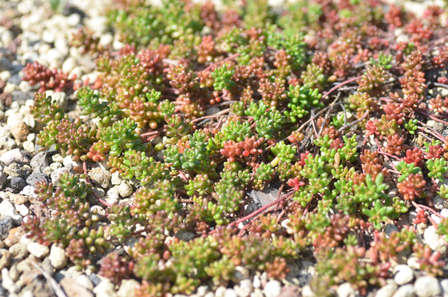
Sedum album L.
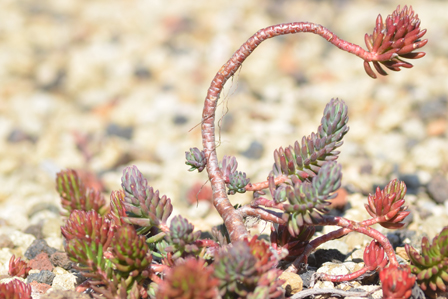
Petrosedum rupestre (L.) P.V.Heath (syn. Sedum rupestre L.)
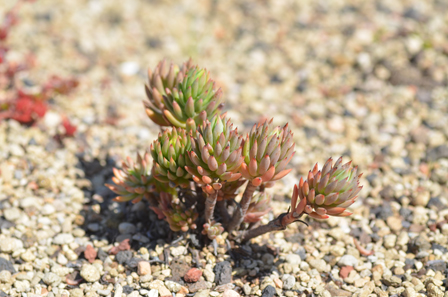
Petrosedum sediforme (Jacq.) Grulich (syn. Sedum sediforme (Jacq.) Pau)
In addition to these plantations, a pilot test is still underway on the use of bryophyte (moss) transplants, installed in November 2014.
Bryophytes transplanted for green roof
Monitoring and maintenance. How does it work?
The regular maintenance of the green-roof is an important factor in this project, translating into benefits not only environmental, but also educational, as maintenance and monitoring are ensured by volunteers, students and researchers at CIÊNCIAS.
For a correct evaluation of the evolution and success of the green-roof installation, it is necessary to regularly monitor it. This monitoring includes: the water content (relative humidity) and the temperature of the substrate, plant survival, plant growth (cover and height), and vegetative and seed propagation (presence of new seedlings).
Measurement of the substrate's relative humidity (RH)
Green roof evaluation grid
Eight years after the installation of the green-roof, what changed?
The Sedum cover is now dominated by two of the four initial species (S. sediforme and S. acre, autochthonous species), while the other two (S. album and S. rupestre) are less visible.
Although the plant cover may seem low, the fresh biomass removed during the last maintenance action reached 4.4 kg. These were plants grown from seeds brought by the wind and birds, mainly annuals and perennial herbaceous plants, that flourish in the local conditions (ex. Centranthus calcitrapae, Micromeria graeca). Other species, not so innocuous for the green-roof due to the size or extension of their root system, are removed during the maintenance actions, 1-2 times per year. These included, among others, large trees such as oaks (seeds transported by jay birds), poplar and palm trees (all present within the campus).
Together with the +Biodiversidade@CIÊNCIAS project (BioDiversity4All, iNaturalist), we began to mark the species present, recording which were planted (CASUAL for iNaturalist) and which are spontaneous.
References about the project:
-
Master Thesis - March 2023,Saule Beken, Efficiency of green roofs as a climate change mitigation measure. Case study in Prague (Czech Republic). Department of Landscape and Urban Planning (FES), Faculty of Environmental Sciences, Czech University of Life Sciences Prague.
-
Original Article (2024) - Cristina Branquinho, Ricardo Cruz de Carvalho et alii A daily time-step hydrological-energy-biomass model to estimate green roof performances across Europe to support planning and policies.
Coordinator: Helena Serrano
Membres of the project: Alice Nunes, Cristina Branquinho, Pedro Pinho, Ricardo Cruz de Carvalho, Sergio Chozas.
For further information, contact sustentabilidade@ciencias.ulisboa.pt.




